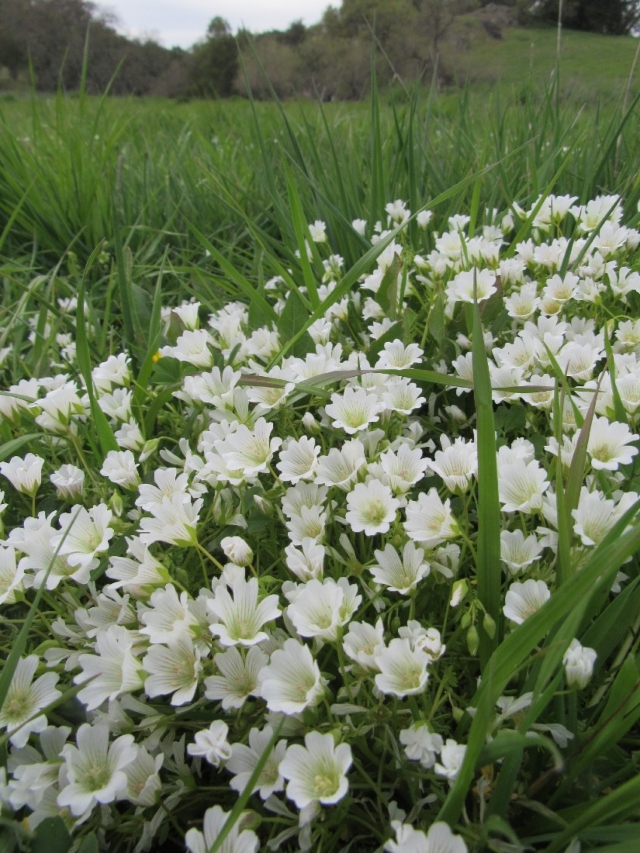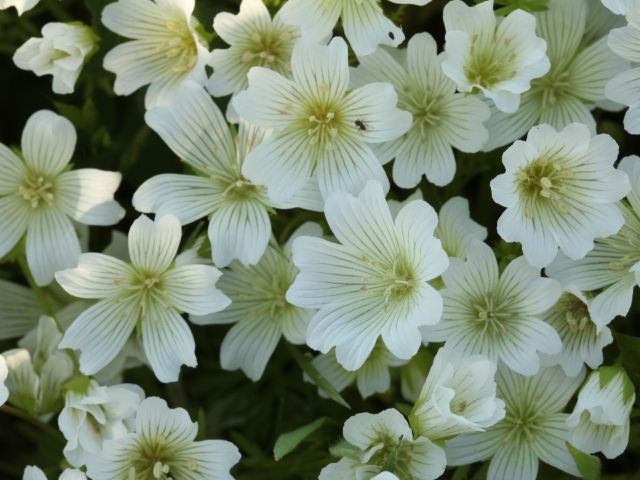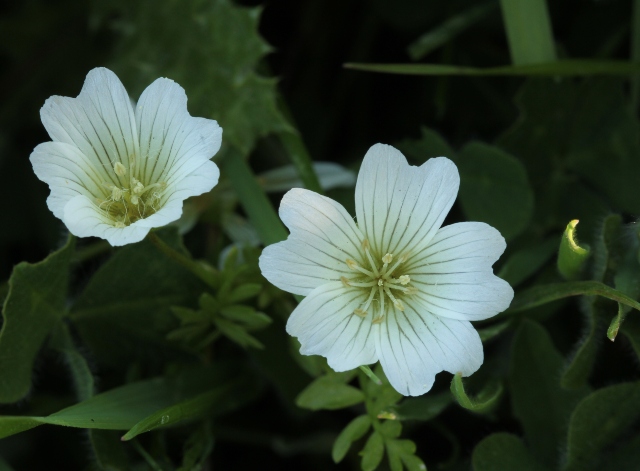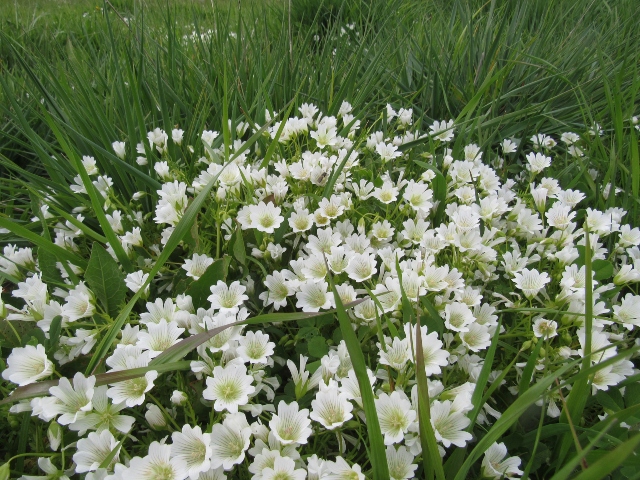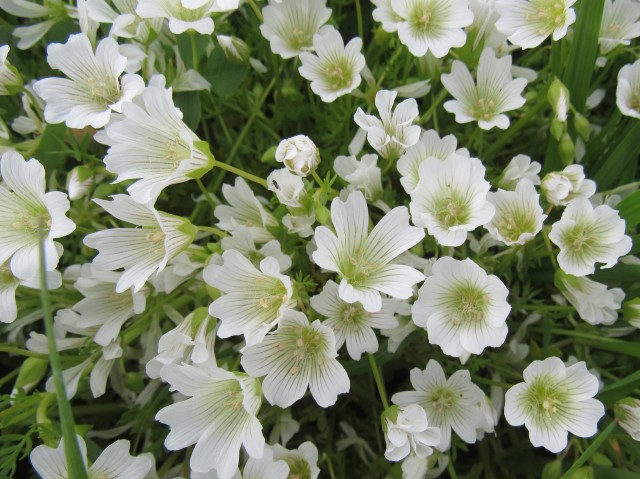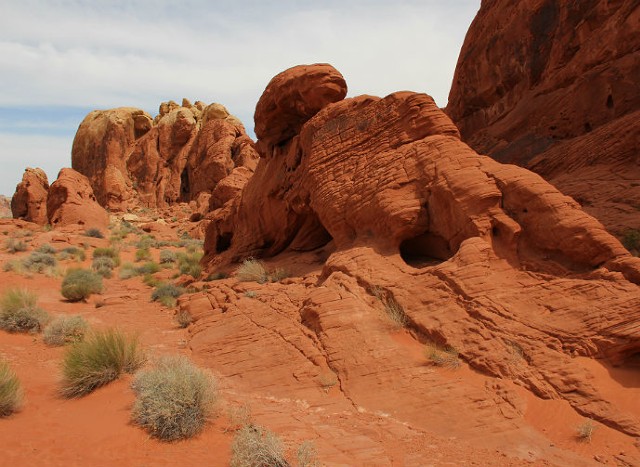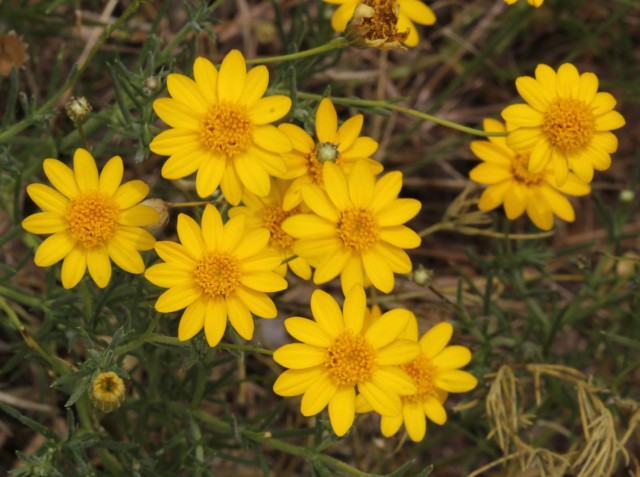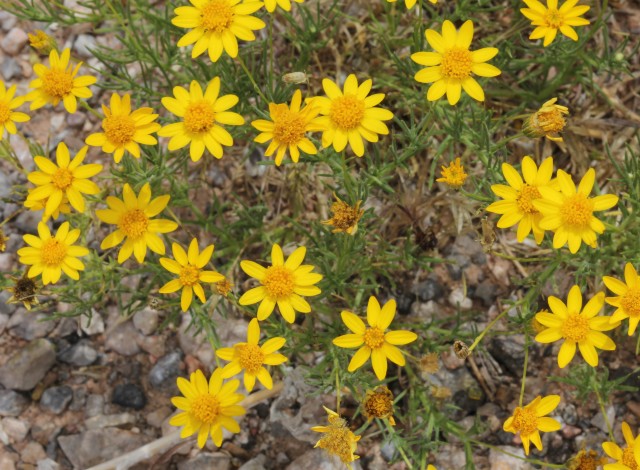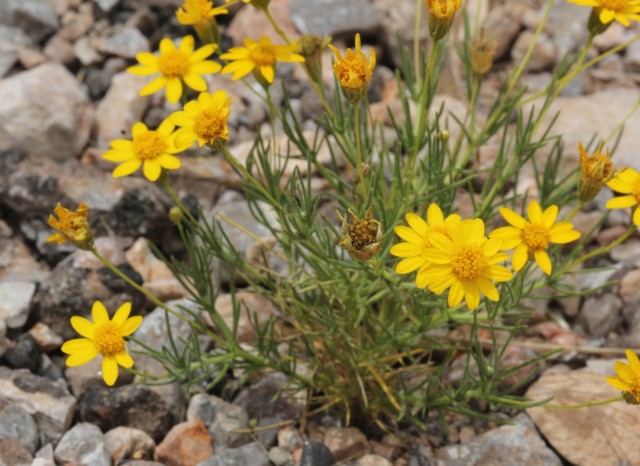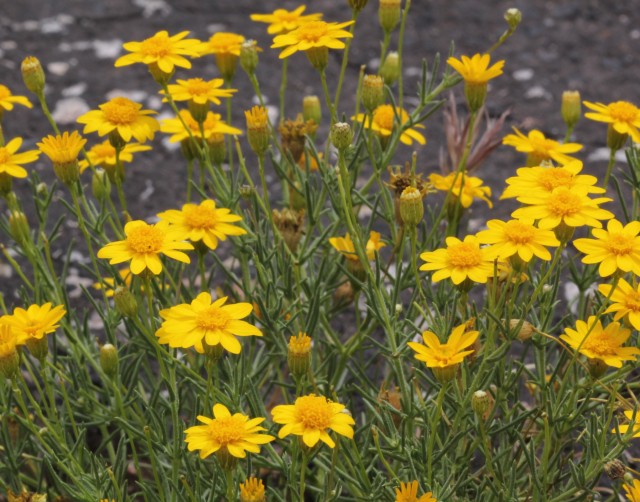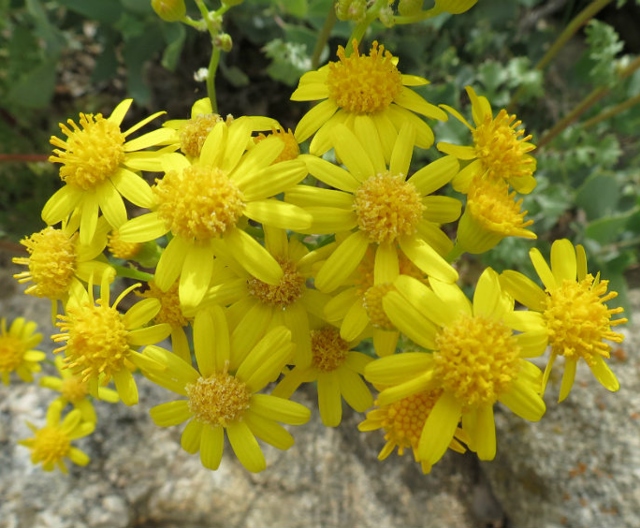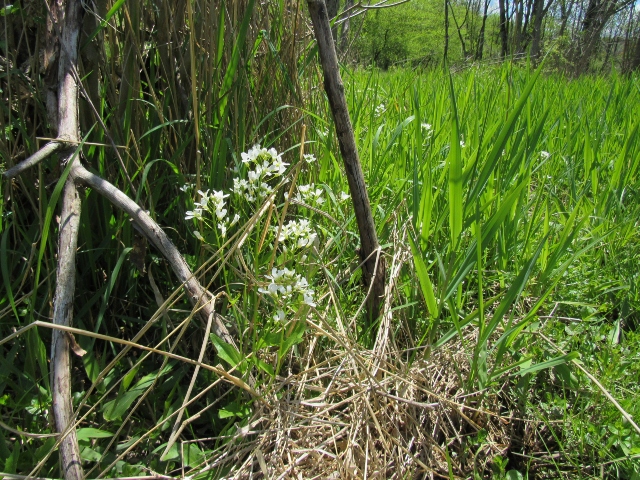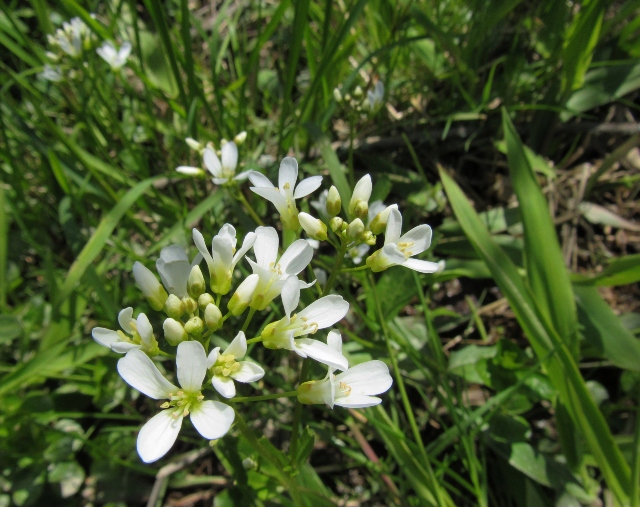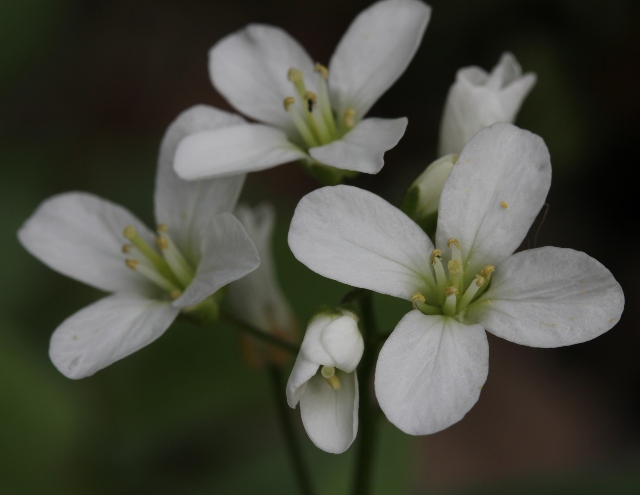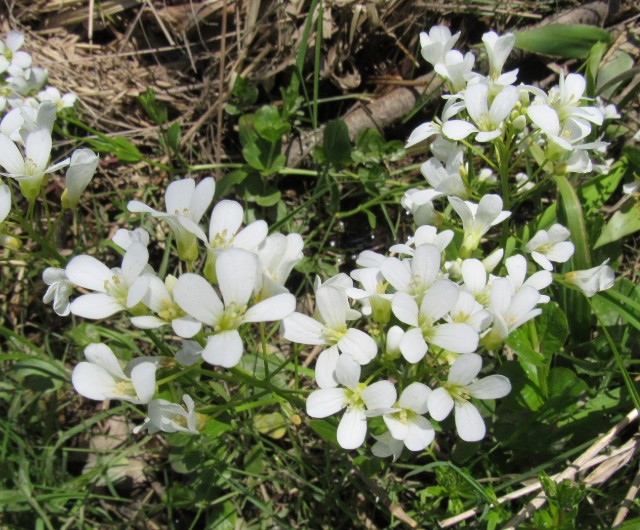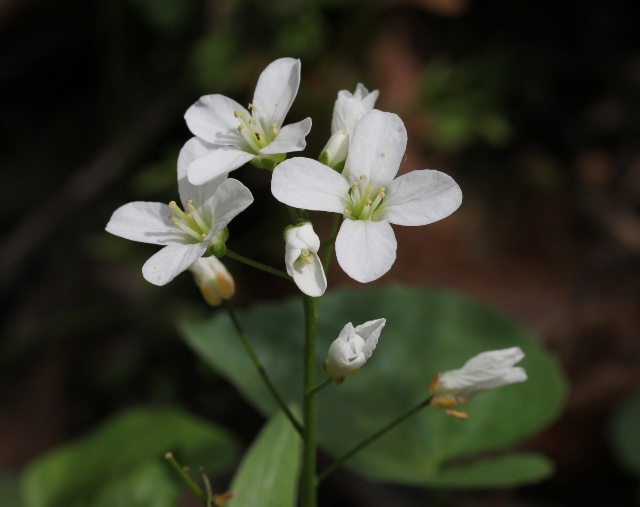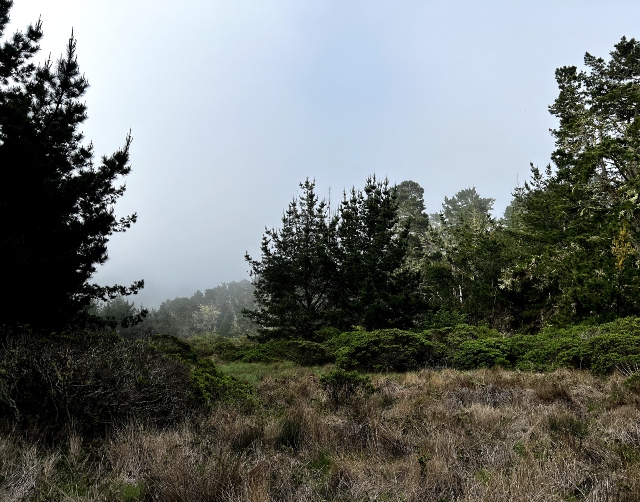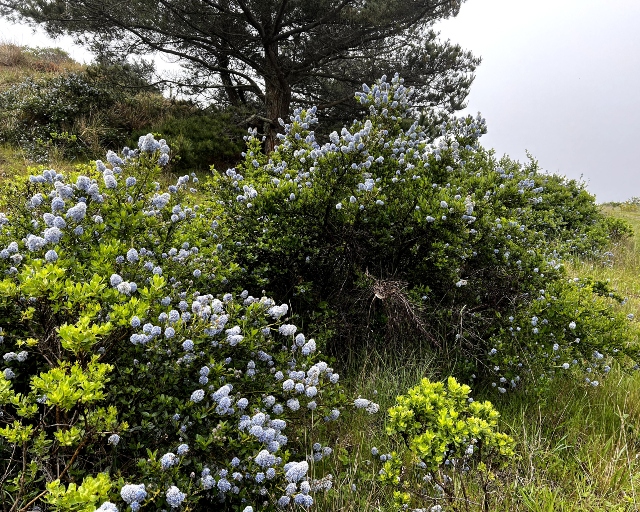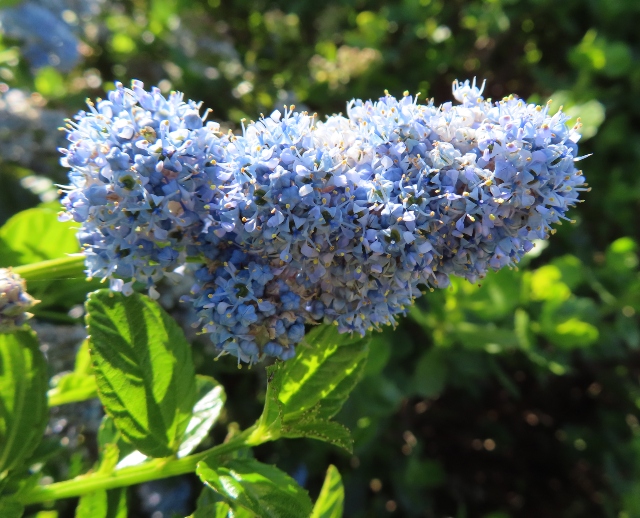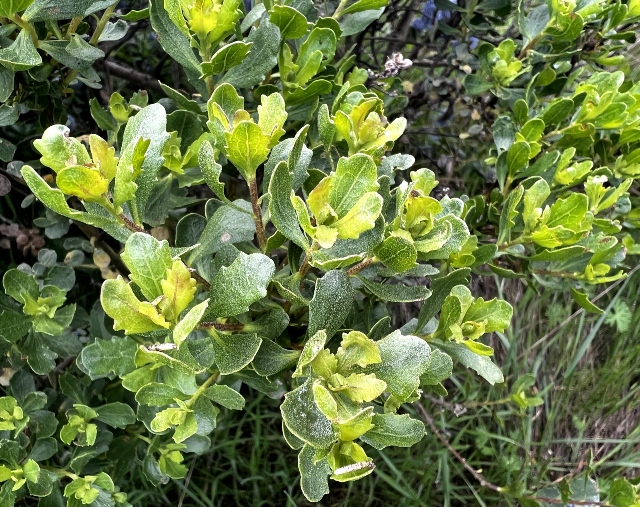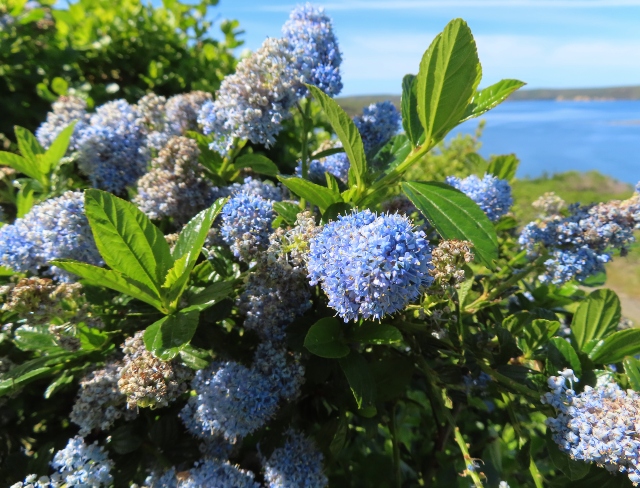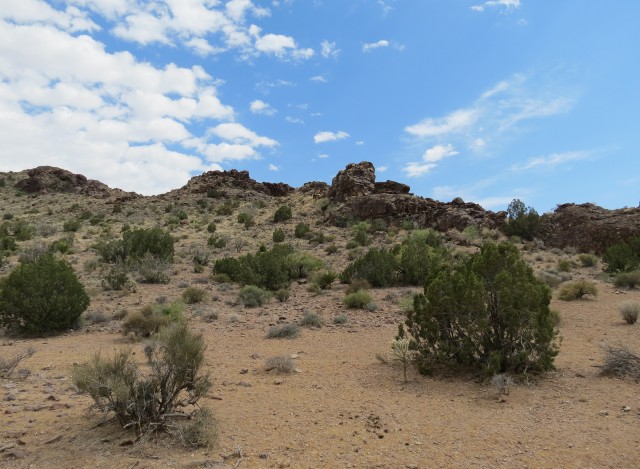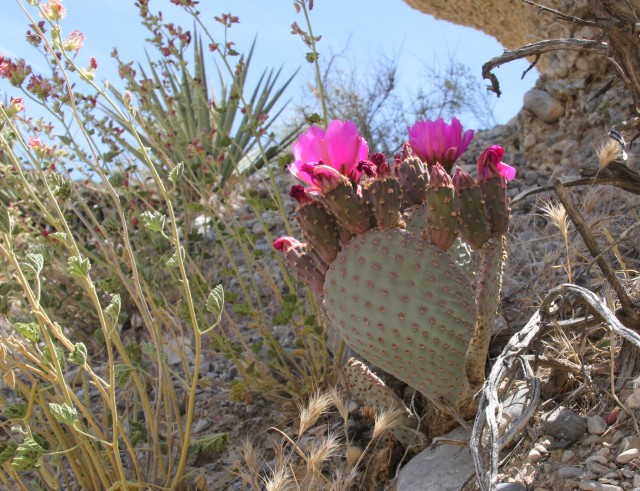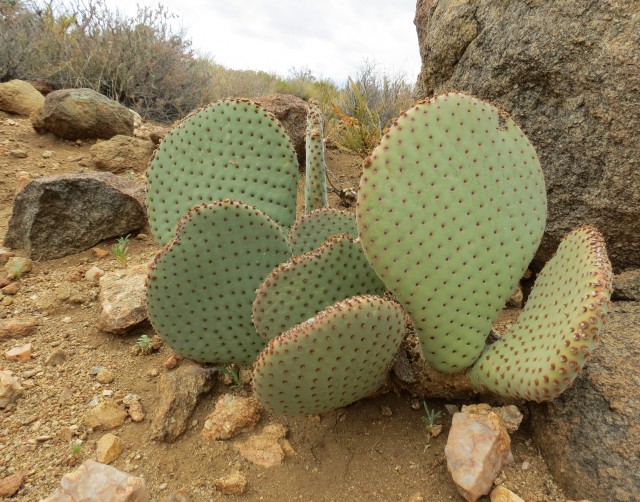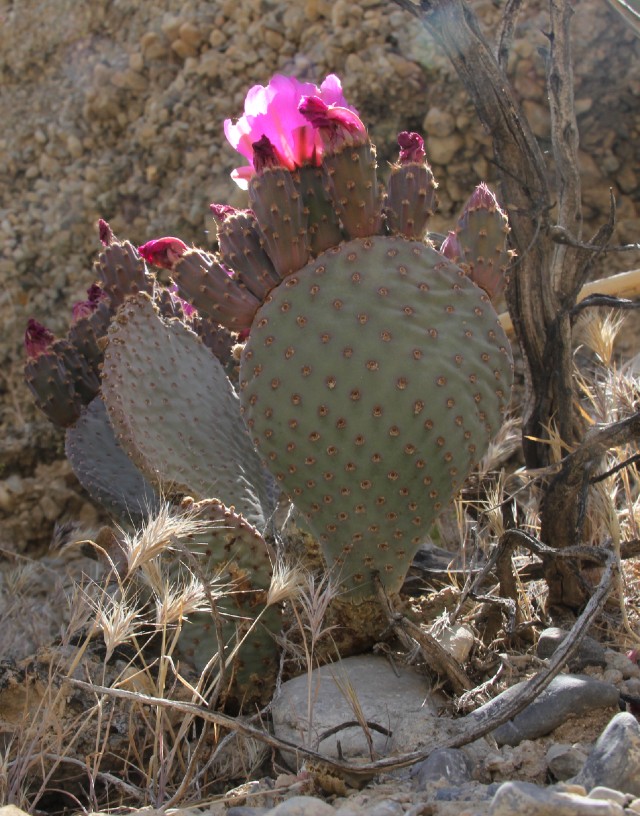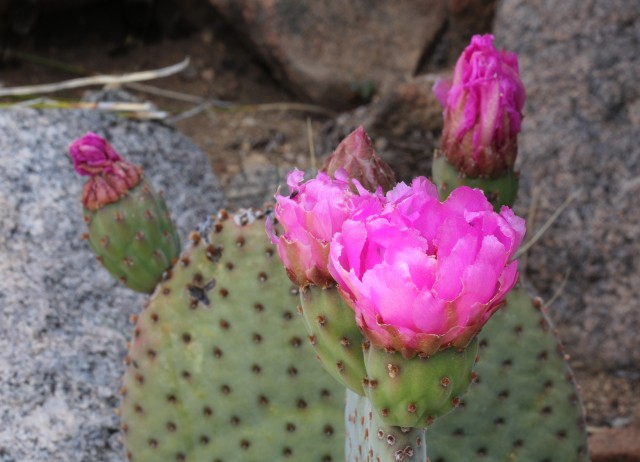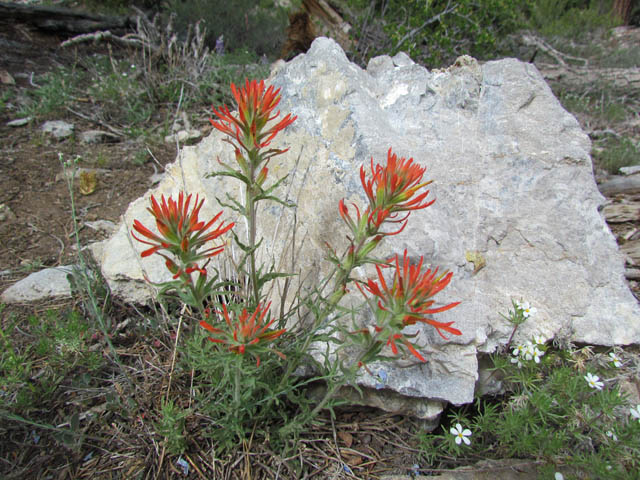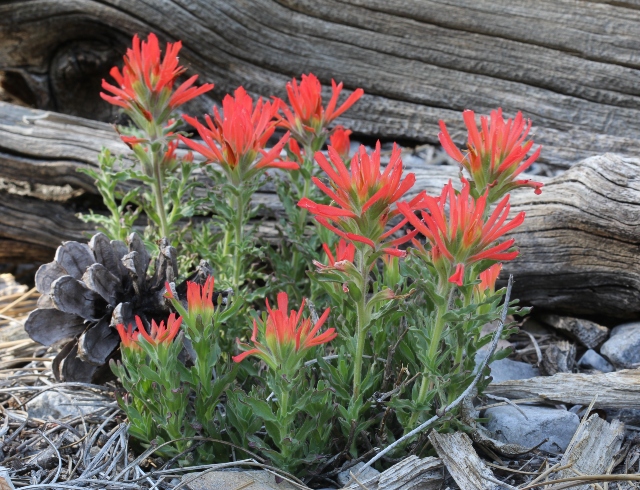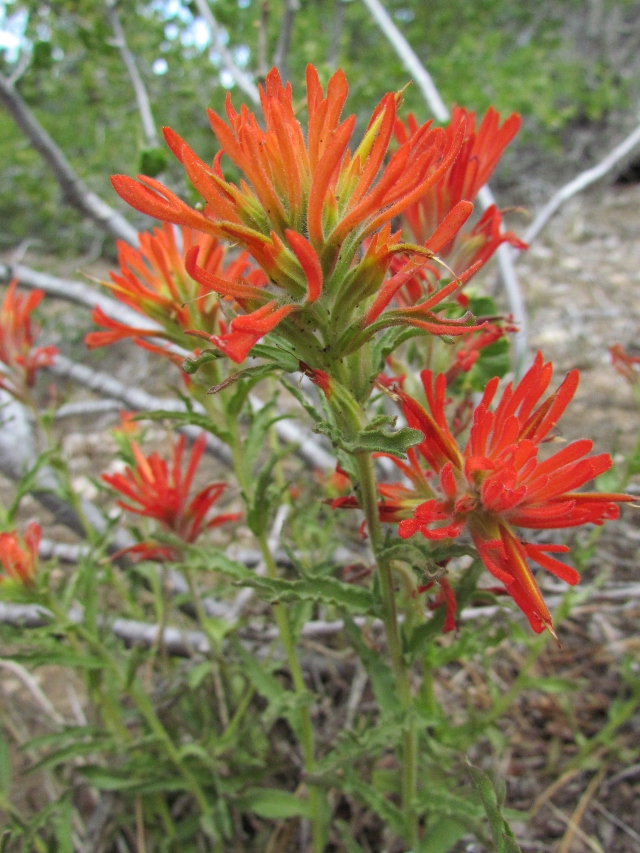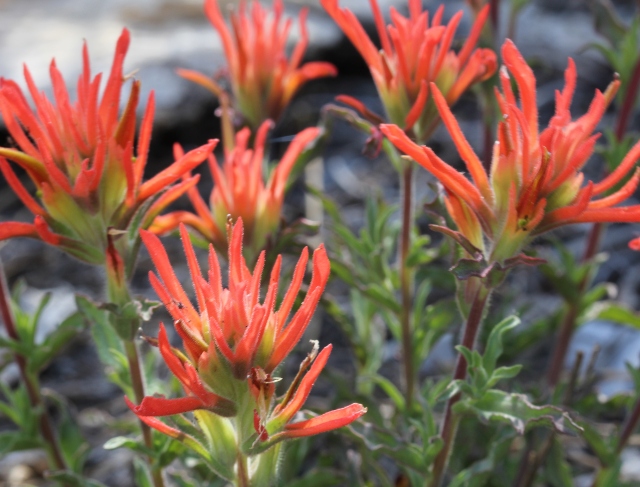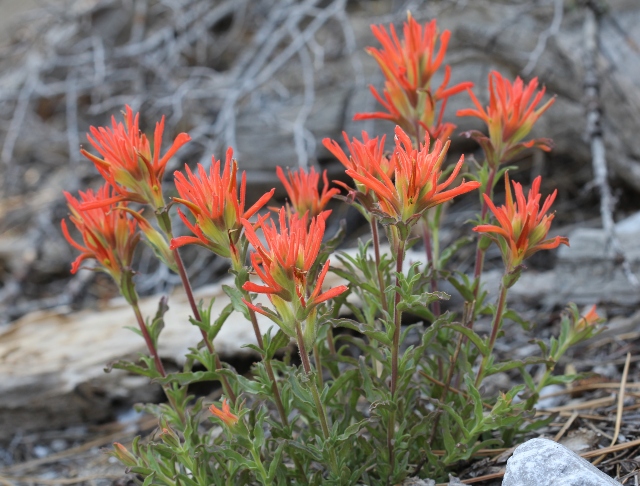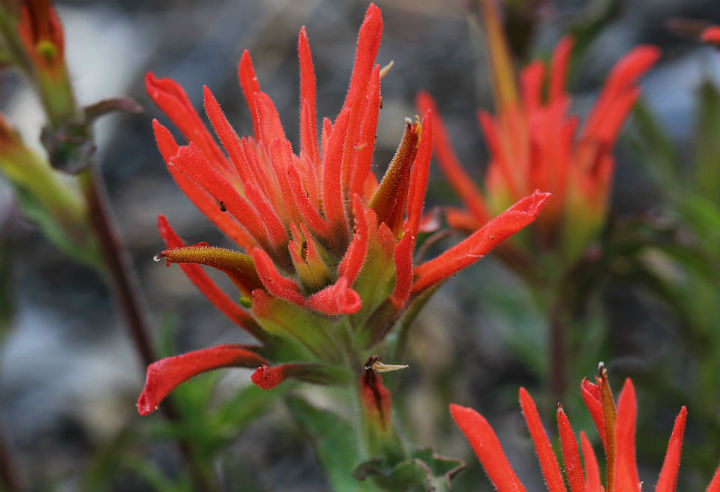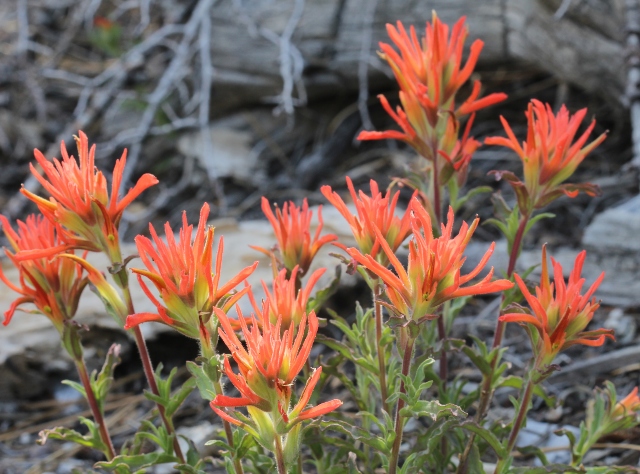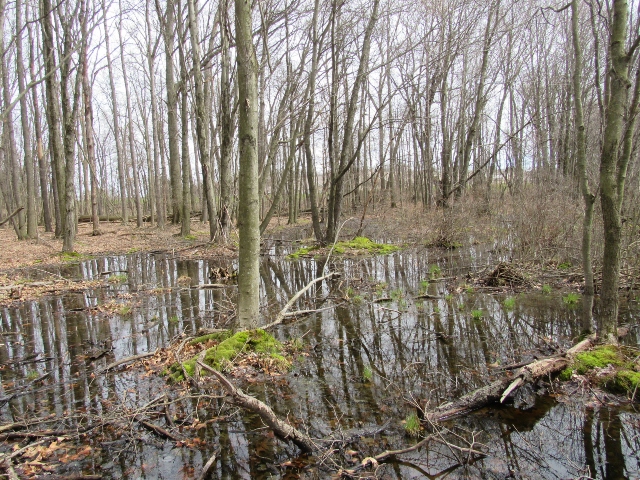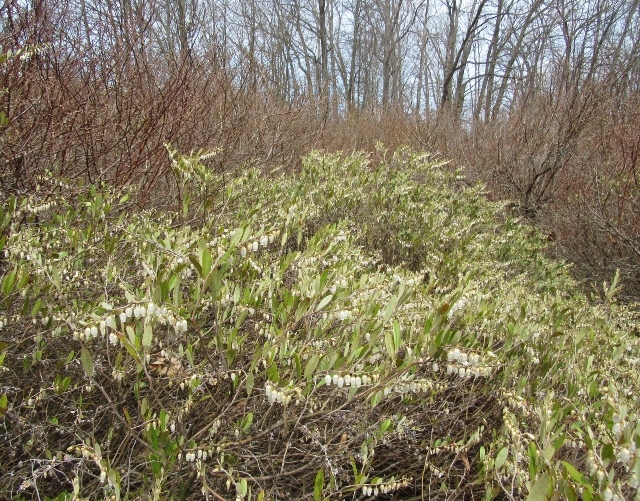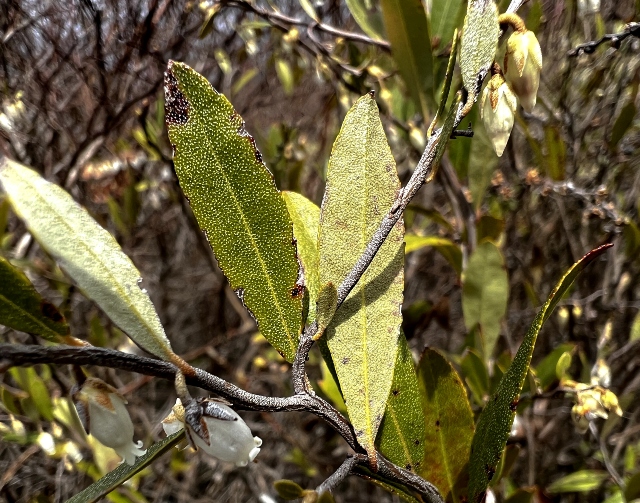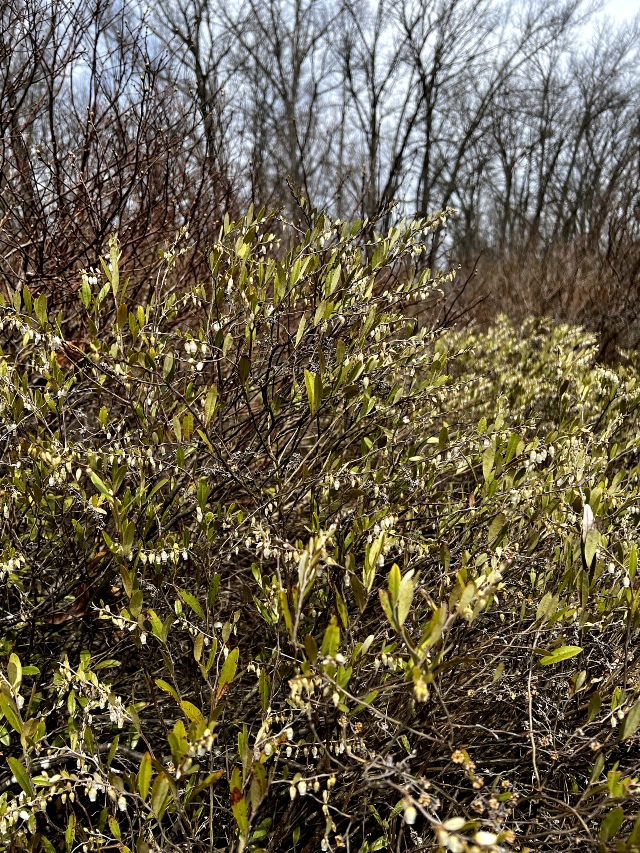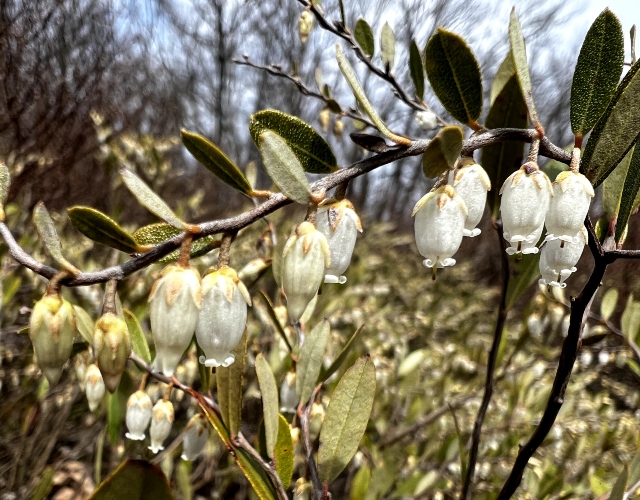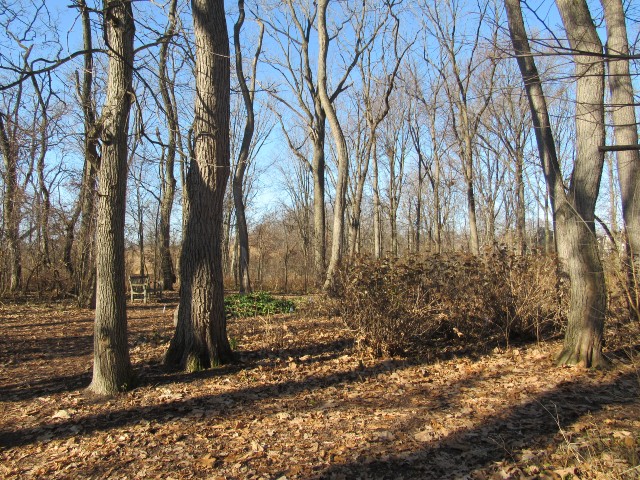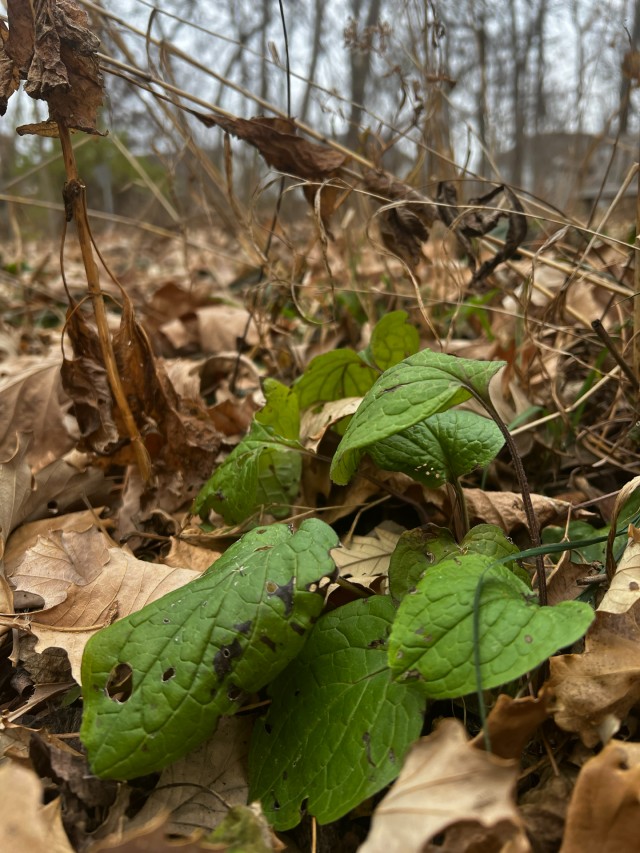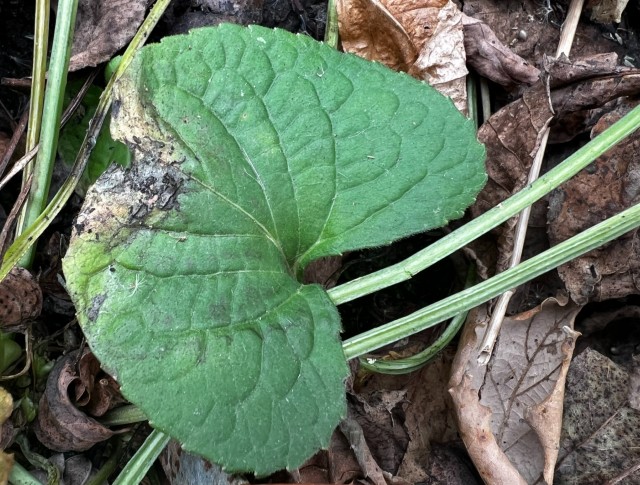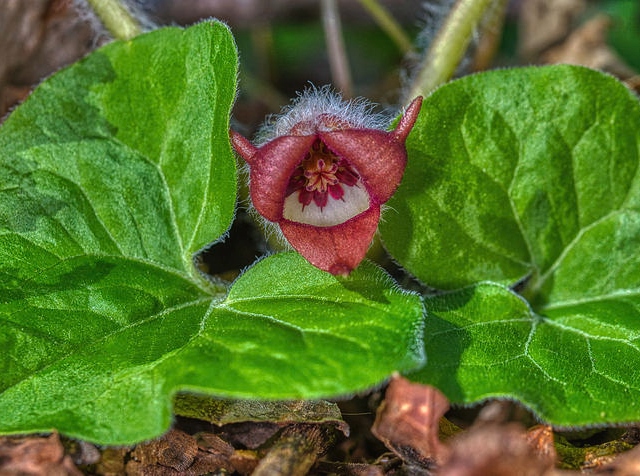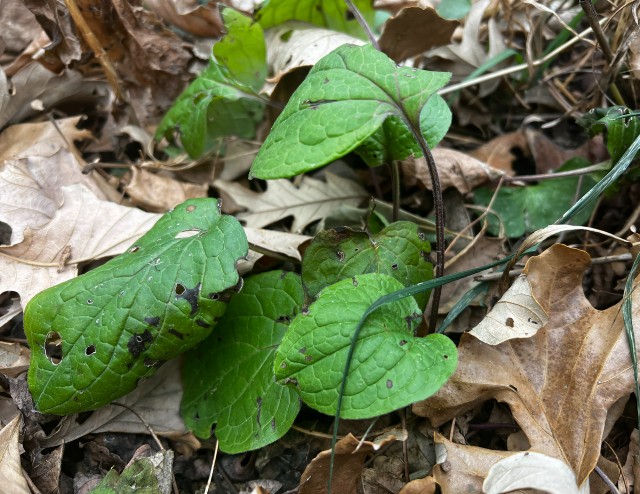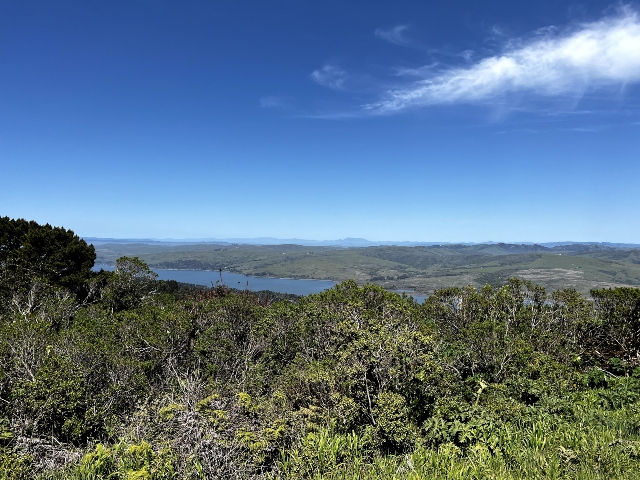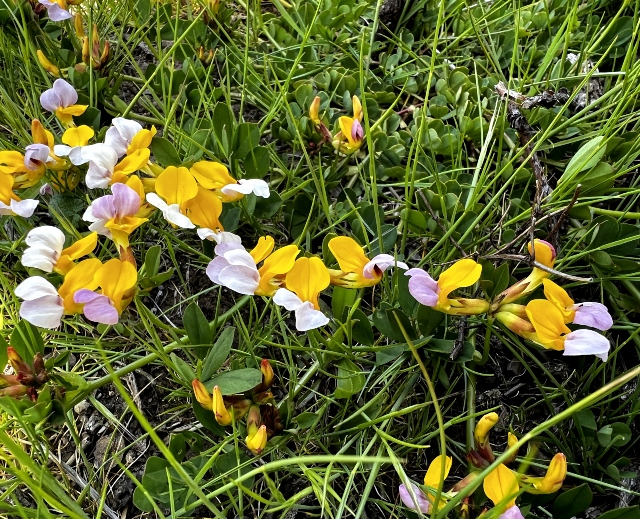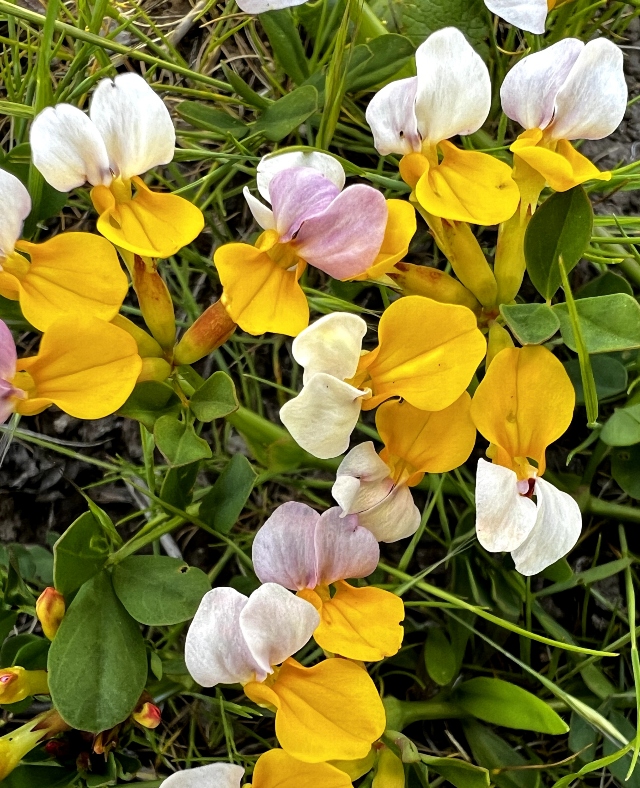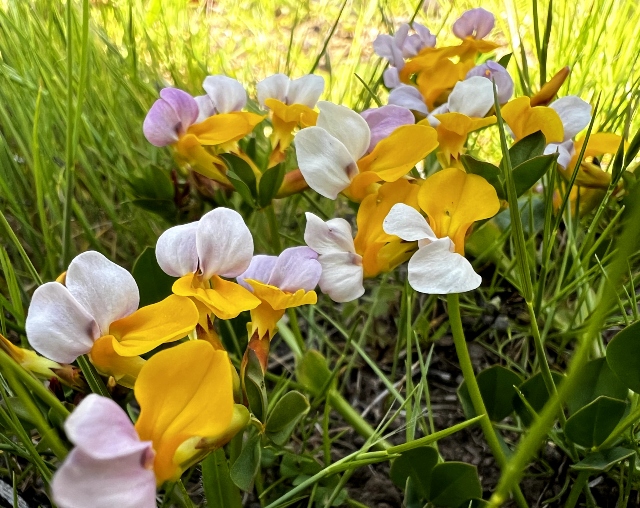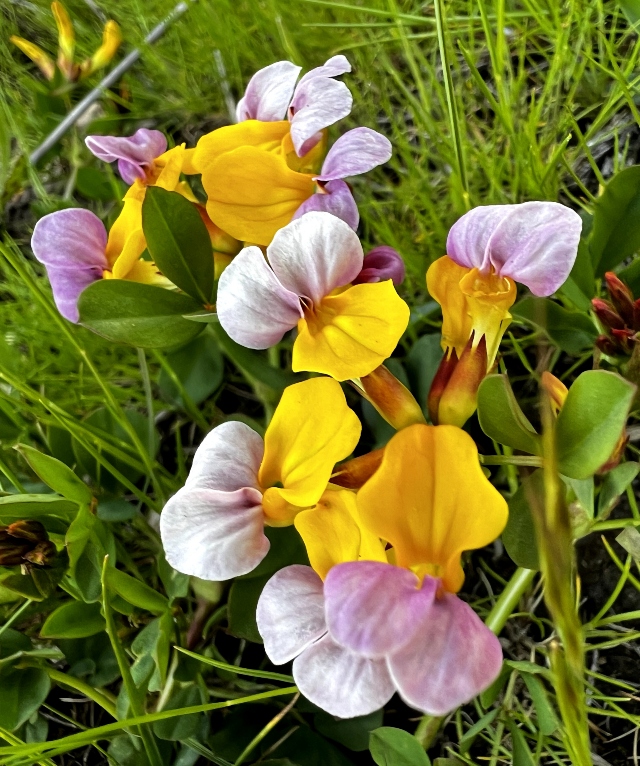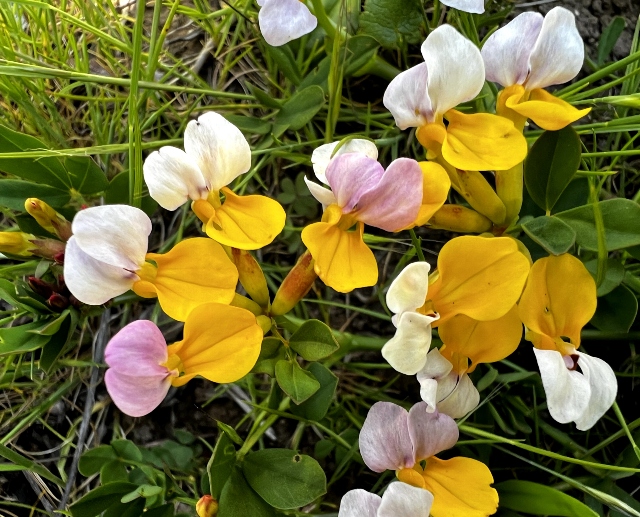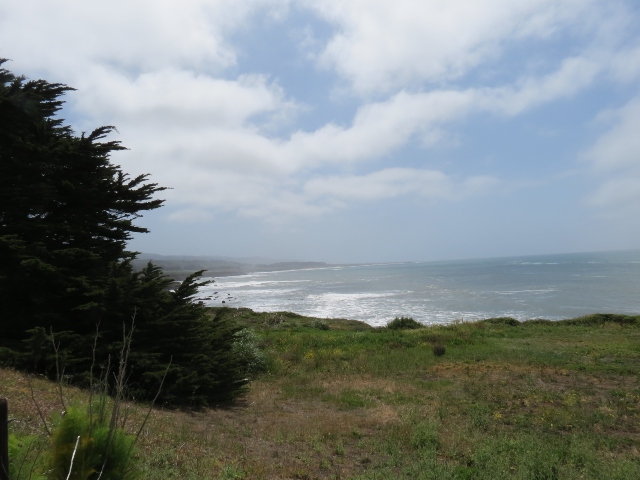
While walking along the California shoreline last month, it was hard not to notice this plant. This species of bindweed is a perennial vine which grows in beach habitats on the west coast and in selected areas on the east coast of North America, and across Europe into Asia.
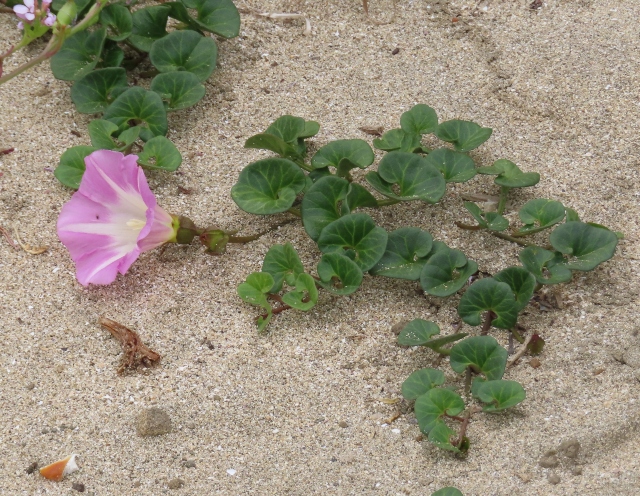
The plant bears fleshy stems, kidney-shaped leaves, and attractive flowers with corollas that are delicate pink to vivid lavender. Its showy flowers are insect-pollinated and attract bees, butterflies, moths, flies, beetles, wasps and ants.
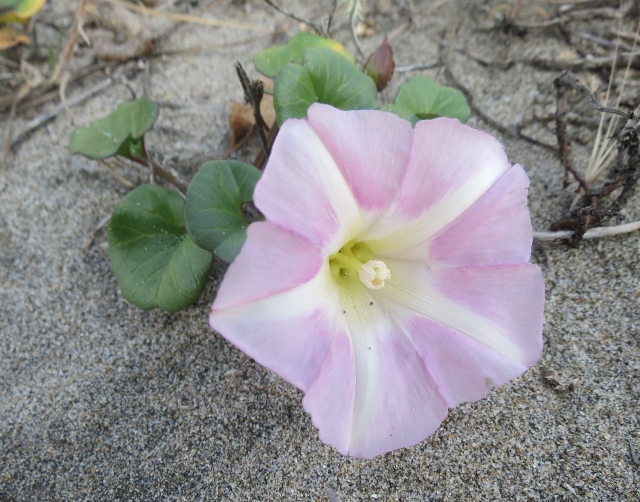
Beach Morning Glory is also called Railroad Vine due to its scrambling nature and ability to cover less-used tracks and roadsides. It is adapted to coastal areas where sand is plentiful and the soil is well-draining. Salt, heat, and wind don’t bother this plant and it is common to see it splayed across sand dunes.

Its leaves are succulent and rounded, with a notched tip resembling a cloven hoof, hence its species name, pes-caprae, which means “goat’s foot” in Latin. The roots of this plant often go for more than 3 feet into the sand.
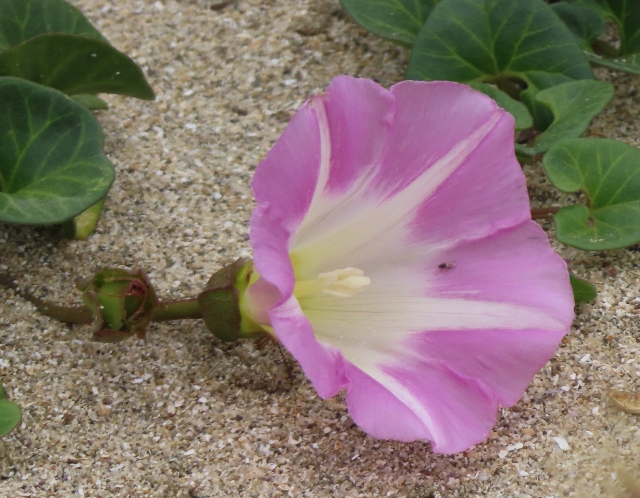
Like other members of its family, its flowers are ephemeral; they bloom in the morning and begin to wilt and close up by afternoon, hence the common name “Morning Glory.” Beach Morning Glory typically blooms in Summer and Fall, but may bloom year-round.
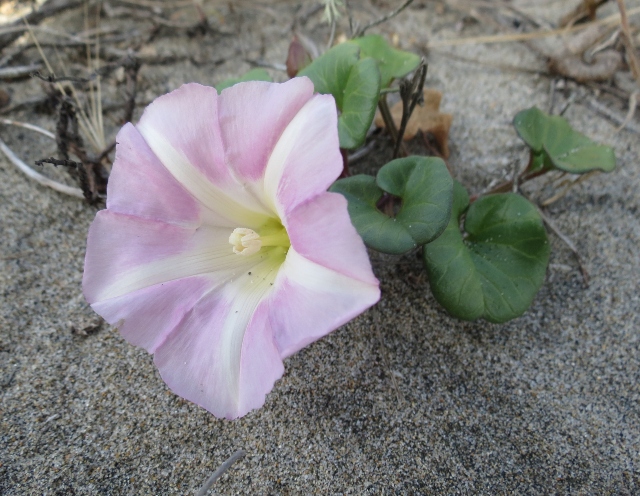
Life is tough for a plant on the beach side of a sand dune. The wind is always blowing, battering stems and leaves with salt spray or burying them under layers of sand. There’s plenty of sun for photosynthesis, but no shade when rays get too intense. But Beach Morning Glory finds a way to thrive in this hostile environment.
Third Eye Herp
E-mail

